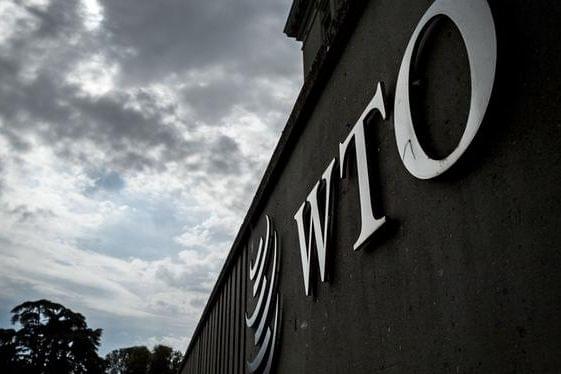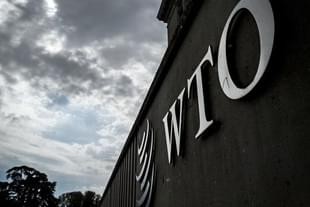World
China’s Case In WTO On Pricing Of Its Products: Here’s How India Will Benefit After Beijing Allowed Its Own Petition To Lapse
M R Subramani
Jun 22, 2020, 01:27 PM | Updated 01:27 PM IST
Save & read from anywhere!
Bookmark stories for easy access on any device or the Swarajya app.


A move by China to allow its petition before the World Trade Organization (WTO) Dispute Settlement Body (DSB) against the methods used by the European Union (EU) to compare the pricing of its products, to lapse could help India in a big way.
China had moved the DSB on 15 December 2016 for a consultation process with the EU, saying that the EU calculation of “normal value of imports” for non-market economy countries was flawed.
Beijing’s argument was that China had served the 15 years transitional period by December 2016 as stipulated by the WTO when it became a member in 2001.
During the transitional period, WTO members trading with China were given the liberty of determining the “normal value of imports” by comparing it with “surrogate” country costs.
Since China has served the transitional period, it said that the value of the products it ships out to WTO member countries should be determined by whether the Chinese companies operated in “market economy conditions” and not through "surrogate country" costs.
As a result of this, Chinese products were subjected to anti-dumping duties particularly by the EU, denying fair competition to its companies, Beijing complained.
The dispute settlement mechanism at WTO required countries to first try and reach some settlement through a consultation process. If no settlement is reached, then the complainant can seek the setting up of a dispute settlement panel.
In this case, China and EU could not reach any settlement and thus the DSB said on 3 April 2017 that it was setting up a panel to examine China’s complaint.
Interestingly, India enlisted itself as a third party in the proceedings along with 19 other countries including the United States, Canada, Japan, Korea, Australia and Russia.
The panel said it would submit its findings in the second quarter of 2019 but on 7 May last year, China requested the suspension of the dispute proceedings until further notice. The panel suspended its work since 14 June last year.
Since China did not request the DSB to resume the panel’s work until 14 June this year, the WTO said the “authority for the establishment of the panel lapsed on 15 June 2020”.
China has not attributed any reason for seeking either suspension of the dispute proceedings or not renewing its request for the resumption of the proceedings.
Experts are not sure if China had developed cold feet over the dispute panel finding anything adverse against it since it has been suffering from higher tariffs for its products across the world.
Chinese reluctance to pursue the dispute also means that it was not optimistic of a ruling in its favour against the group of countries that had lined up against it.
China’s decision will now help India in two ways. One, India can impose a higher duty on Chinese products arriving in the country.
This will also mean that the Director-General of Trade Remedies (DGTR) can be more strict in its anti-dumping probe against Chinese companies. The DGTR investigates complaints from domestic manufacturers on their products' market share being undermined by under-priced products from foreign origins.
India was among the first countries to change its investigation approach after China served its transitional period. Following the latest development, the anti-dumping authority will be more emboldened now to act against Chinese companies.
What this means is that if Chinese companies fail to respond satisfactorily to the DGTR questionnaires during anti-dumping investigations, then the authority can resort to working out “surrogate costs” and imposing a higher level of anti-dumping duty.
Currently, India is reviewing anti-dumping duty on 25 Chinese products.
Minister of State for Commerce and Industry C R Chaudhary told the Lok Sabha in February this year that 99 Chinese products were subjected to anti-dumping duties by India.
These products include chemicals and petrochemicals, fibres, yarn, electronics, machinery items, pharmaceuticals, rubber and steel products.
With the Chinese Army locking horns with the Indian Army at the border, New Delhi can now try and subject more Chinese products to a higher duty.
Two, India could benefit by improving its competitiveness in the global market as other countries could continue targeting cheaper Chinese imports.
Indian leather and garment products will be the prime beneficiaries of the latest developments. With India now going all out to strengthen its manufacturing industries, it can now hope to make inroads in other products such as machinery items and pharmaceutical drugs as well.
Already, Indian pharmaceutical drugs, particularly hydroxychloroquine and paracetamol, are being exported to over 130 countries after the onset of the novel coronavirus (Covid-19) pandemic.
In Europe, particularly, India could try and gain in view of anti-Chinese sentiment in the continent besides its huge trade deficit with Beijing. The EU’s trade deficit is over 155 billion euros (approximately Rs 13,212 crore).
India, on the other hand, is the eighth-largest trading partner with the EU, whose trade with New Delhi is 80 billion euros (Rs 6,819 crore).
EU, by virtue of being the second-largest destination for Indian exports after the US, is also looking to improve its relations with New Delhi. Trade between both increased 72 per cent during 2009-2019, a pointer to improving bilateral relations.
With EU share in India’s foreign direct investment increasing to 18 per cent in 2019 from 8 per cent in 2009 and over 6,000 European firms operating out of India, New Delhi’s hopes have only brightened in view of China not deciding to press its WTO case.
China’s latest decision comes at a time when India has replaced it as the largest trading partner during 2018-19.
That the Narendra Modi government has swung into action to press home the advantage is clear from the way the Commerce Ministry has sought details from its overseas mission on Indian products that can replace Chinese goods.
M.R. Subramani is Executive Editor, Swarajya. He tweets @mrsubramani





